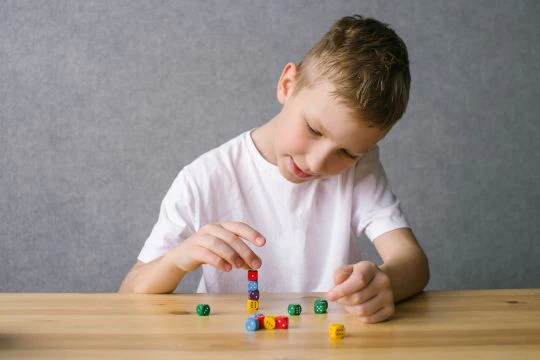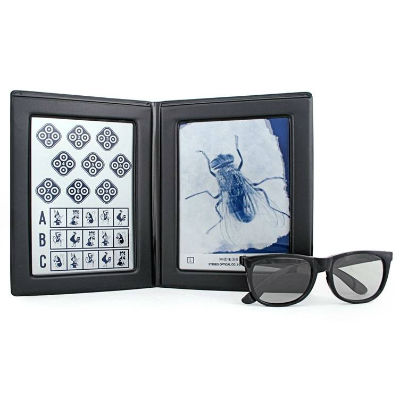What is stereopsis- its crucial parameters
Stereopsis, also known as stereo vision, is a visual phenomenon that allows humans to perceive depth and three-dimensional structures. This is the third grade of binocular vision system, which integrates the slightly different images captured by each eye into a single, coherent three-dimensional view of the world.

Binocular single vision (BSV) is the ability of our eyes to create a single, unified image from the slightly different views provided by each eye. This fusion of images is essential for depth perception and is made possible by the brain’s ability to combine and interpret the visual information received from both eyes. Stereopsis exists if fusion exists.
Development of stereopsis
By around 3 years of age, most children have developed relatively mature stereopsis. Children refine their depth perception abilities, and by the age of 5, they typically have fully developed stereopsis similar to that of adults.
Importance of stereopsis daily life
In children, the development of stereopsis plays a crucial role in various aspects of visual and cognitive development. Here are some key points highlighting its importance:
Depth Perception
Stereopsis allows children to accurately perceive depth, which is essential for tasks such as judging distances, navigating the environment safely, and interacting with objects in space.

Fine Motor Skills
The ability to perceive depth accurately is closely linked to the development of fine motor skills. Children with well-developed stereopsis tend to have better hand-eye coordination, which is essential for tasks such as writing, drawing, and playing sports.
Academic Performance
Good depth perception can also influence academic performance. For example, in tasks involving reading and writing, children need to accurately judge distances between words and letters on a page, which is facilitated by stereopsis.
Sports and Physical Activities
Depth perception is crucial in sports and other physical activities. Children with well-developed stereopsis are better able to judge distances when throwing or catching a ball, which can improve their performance in sports.

Social Interaction
Stereopsis also plays a role in social interaction. For example, it helps children judge the distance between themselves and others, which is important for maintaining personal space and interacting with others in a socially appropriate manner.
Tests for stereopsis
Here are some commonly used tests for stereopsis:
Randot Stereotest
This test uses a series of random dot stereograms to assess stereopsis. The patient wears polarized glasses and is asked to identify a three-dimensional shape or pattern within the stereogram. The Randot Stereotest is often used in clinical settings and is suitable for both children and adults.

Titmus Fly Stereotest
The Titmus Fly Stereotest is another commonly used test for stereopsis. It uses polarized glasses to present a series of images to each eye. The patient is asked to identify which images appear three-dimensional. This test is particularly useful for screening for stereopsis in children and adults.

TNO Stereotest
The TNO Stereotest is a series of plates with geometric shapes that are designed to test stereopsis. The patient is asked to identify the shape that appears to float above the background on each plate. The TNO Stereotest is often used in research settings and can provide a more detailed assessment.

Lang Stereo Test
The Lang Stereo Test uses a series of animal pictures that are presented to each eye separately. The patient is asked to identify which animal appears three-dimensional. This test is often used in pediatric ophthalmology and can be more engaging for children.

Synoptophore
The synoptophore is a specialized device used to assess binocular vision, including stereopsis. It allows the examiner to control the images presented to each eye and assess how well the patient’s eyes work together. The synoptophore is often used in cases where more detailed testing of binocular vision is needed.

Conditions affecting stereopsis
Stereopsis may not develop or may be impaired in several conditions, including:
Strabismus
Strabismus, or misalignment of the eyes, can interfere with the development of stereopsis. When the eyes are not properly aligned, they send different images to the brain, which can disrupt the development of binocular vision.
Amblyopia
Amblyopia, or “lazy eye,” is a condition where one eye does not develop normal vision, often due to strabismus or a significant difference in refractive error between the eyes. Because the brain relies more on the stronger eye, the weaker eye may not develop normal visual acuity or stereopsis.
Anisometropia
Anisometropia is a condition where there is a significant difference in refractive error between the two eyes. This difference can lead to reduced stereopsis, as the two eyes may not focus on the same point in space.
Visual Deprivation
Conditions that deprive one or both eyes of visual input during critical periods of development, such as congenital cataracts, can also lead to deficits in stereopsis.
Brain Injury or Disease
Damage to the visual processing areas of the brain, whether from injury, stroke, or disease, can affect the development or function of stereopsis.
Stereoacuity exercises
These exercises are designed to help the brain better integrate the images from both eyes, which can enhance depth perception and binocular vision. Here are some common exercises:
Stereogram Viewing
Viewing stereograms, which are images that appear three-dimensional when viewed correctly, can help train the eyes and brain to work together.

Fusion Activities
Activities that require the eyes to work together to fuse images can help improve stereopsis.
Patching
Patching one eye for short periods while performing tasks that require depth perception can help strengthen the weaker eye and improve binocular vision.
Computer-Based Programs
There are computer-based programs and apps designed to improve stereopsis through interactive exercises and games.
Brock String Exercise
The Brock string is a tool consisting of a string with three colored beads. By focusing on each bead while looking through the string, the eyes are forced to converge and diverge, which can improve eye coordination and depth perception.

Early detection and treatment of conditions that can interfere with its development are essential to minimize the impact on visual function. Vision therapy and other interventions may be recommended to improve stereopsis in some cases.
Founder of EyesMatterMost- an optometry student who loves talking about eyes. I tend to cover topics related to optometry, ophthalmology, eye health, eyecare, eye cosmetics and everything in between. This website is a medium to educate my readers everything related to eyes.
